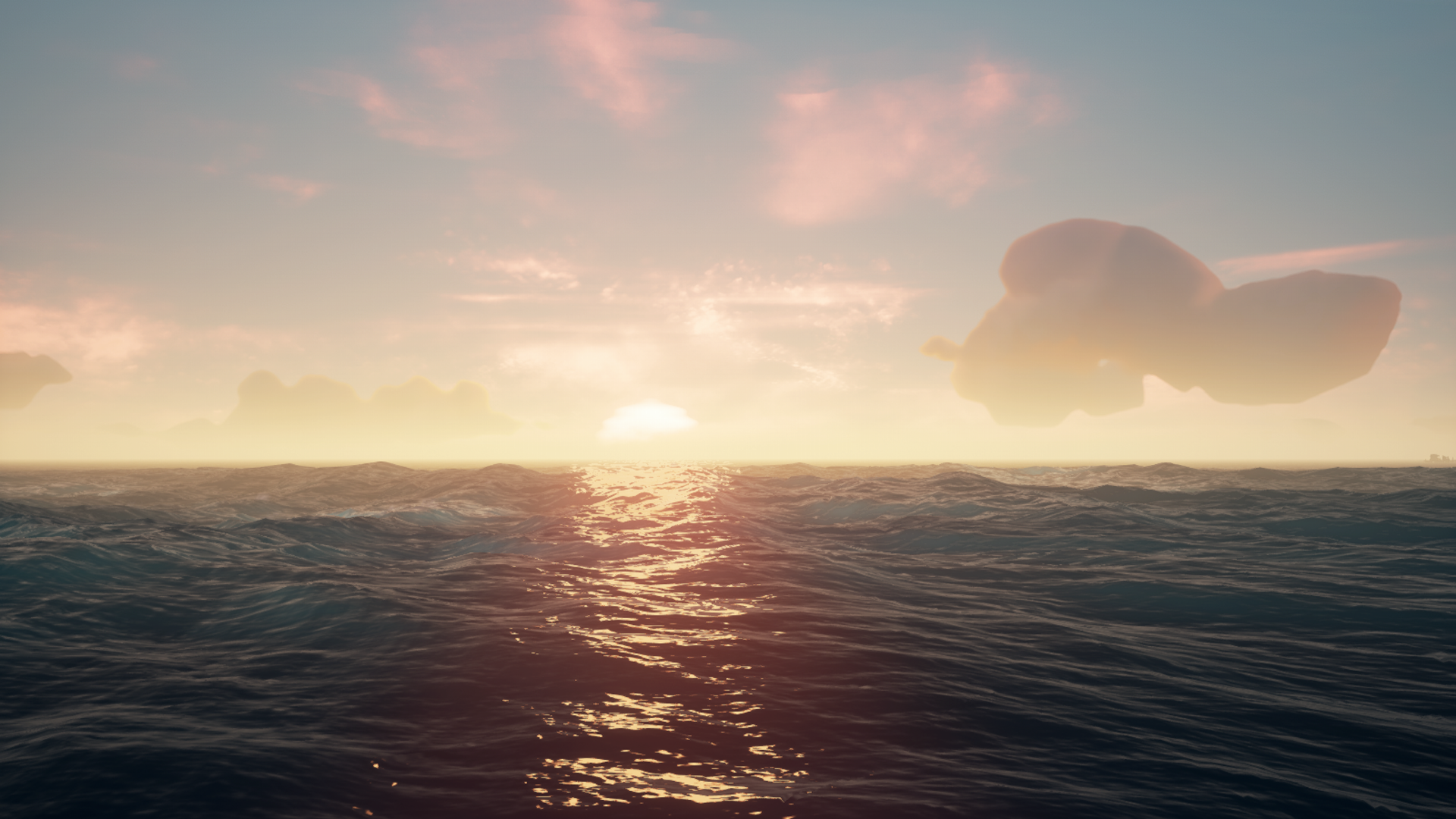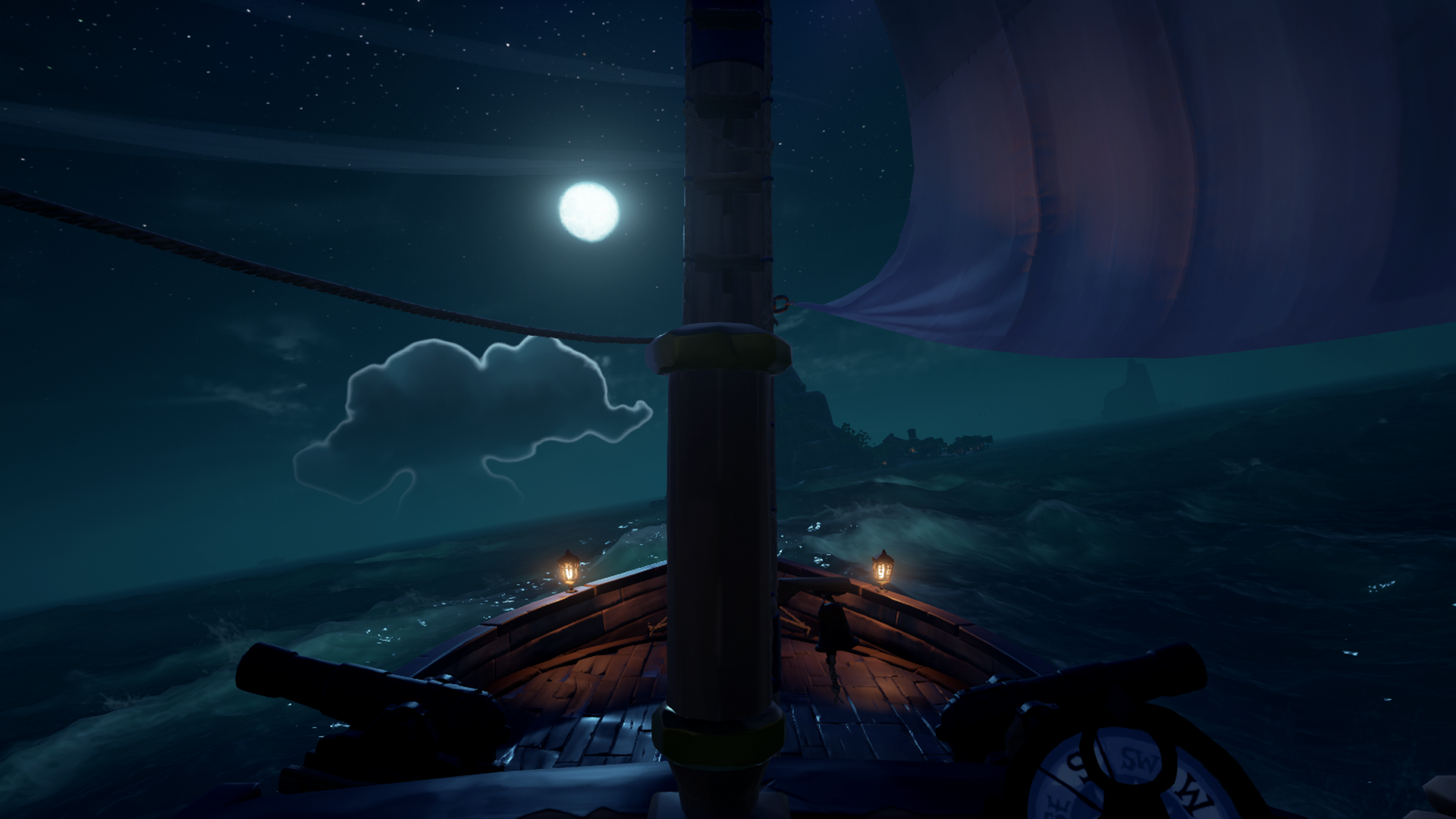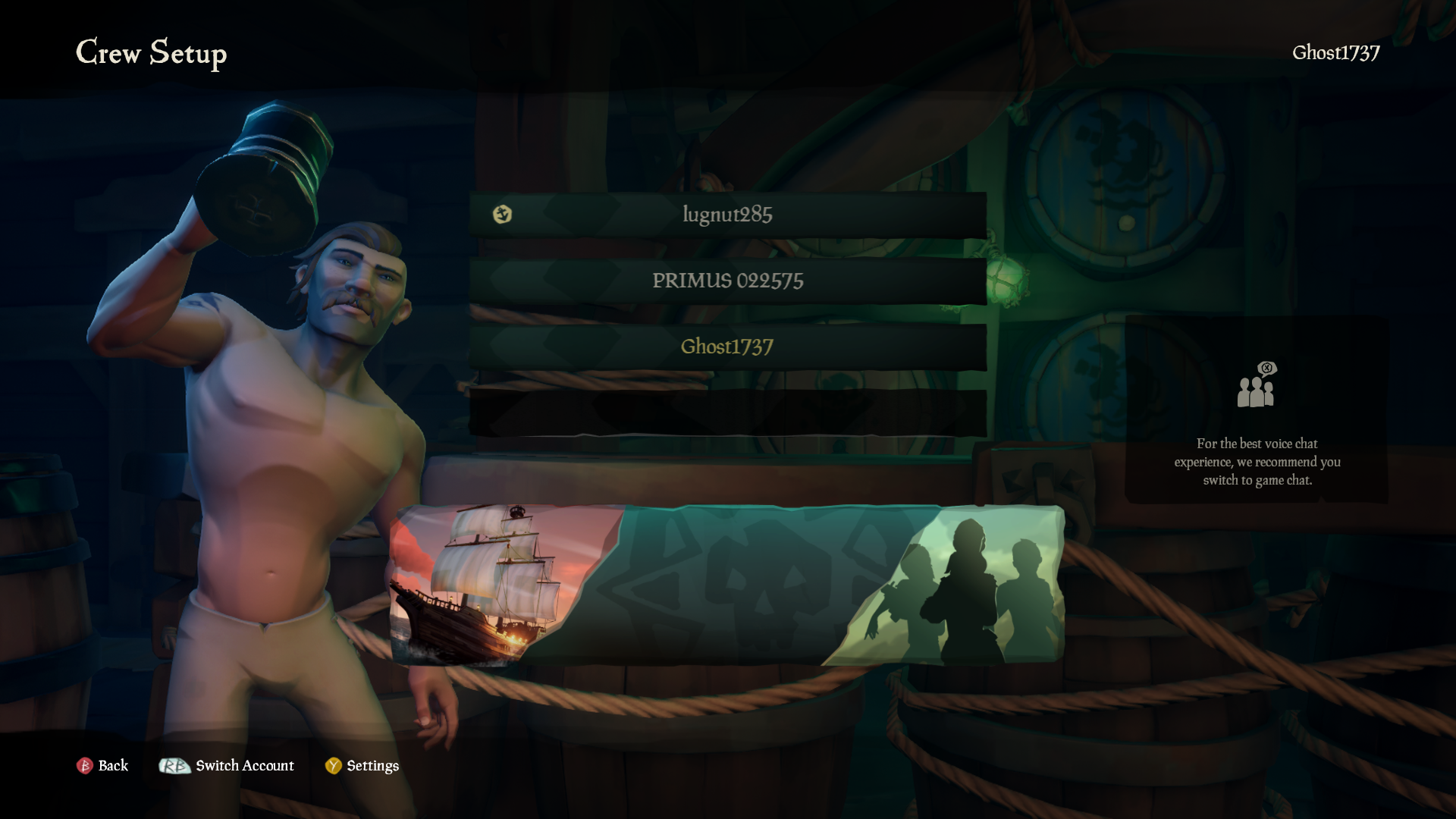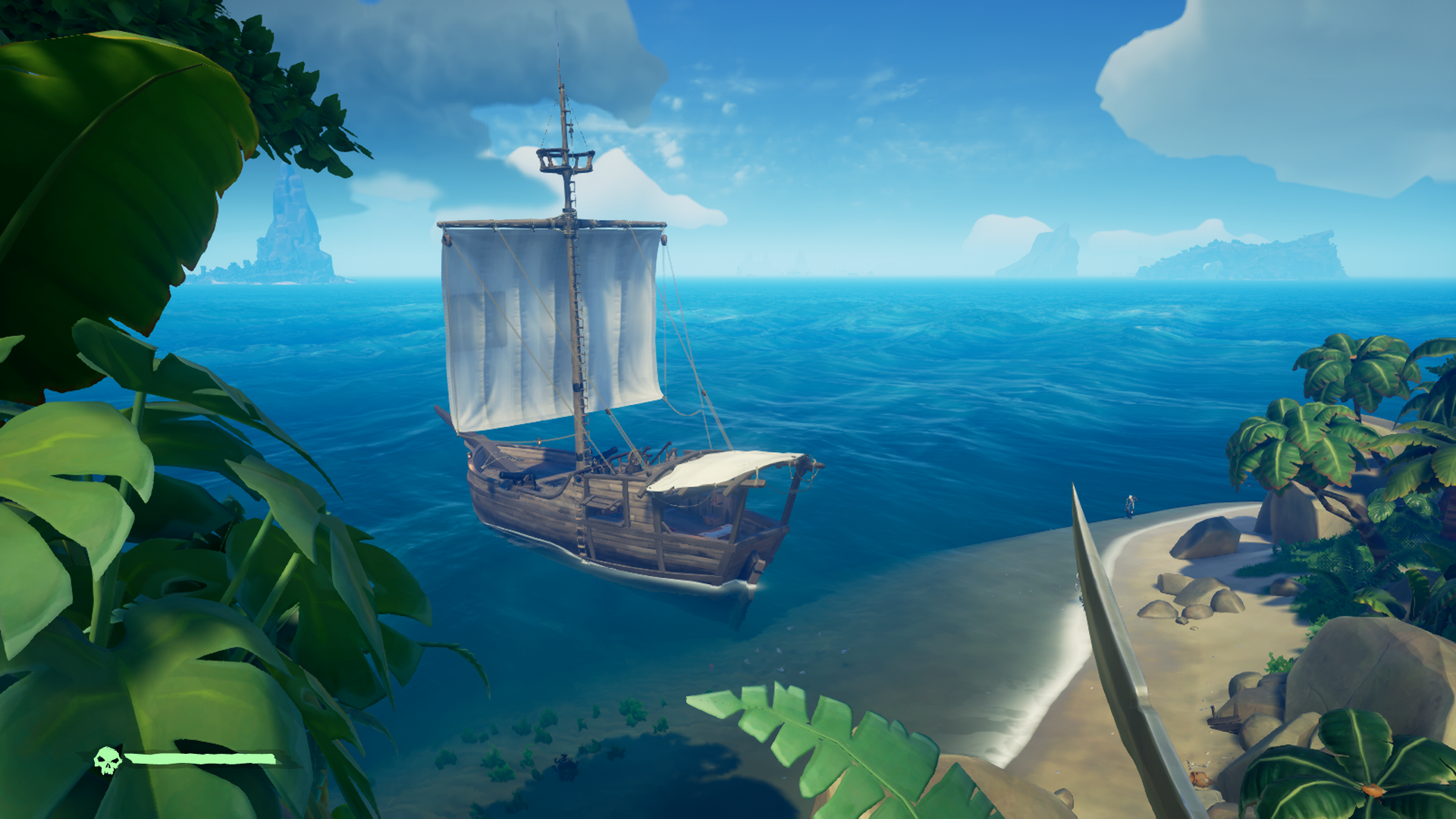Sea of Thieves review
A week after the game’s release, reviews for Sea of Thieves have finally begun to surface; they’re “conflicted” at best, “mediocre” at worst. Before diving into the specifics of what works and what doesn’t, I wanted to address the biggest handicap Sea of Thieves will face: public perception.
The Game Informer Show referred to Sea of Thieves as a “lifestyle game,” something players log into for fun with a group of friends. That’s how Rare marketed the game, and that’s what Twitch streamers and YouTube personalities experienced. But watching someone else play a game can be deceptive. Their fun becomes an illusion, and we get so focused on the entertainment value that we forget what we really enjoyed: sharing that experience with someone, whether it’s an online persona or a friend across the country.
Even after a public beta, much of the industry still misjudged what Sea of Thieves wanted to be. Rare never promised a loot-driven RPG. (In fact, all evidence points to the contrary.) Instead, the studio set out to create an emergent story machine in a world with gorgeous skyboxes and systems that cater to hilarity—something they could build content onto and expand over time based on player feedback.
That mission statement echoes how Destiny evolved over its three-year lifespan, and the same can be said for the other successful “shared world” games. Have we already forgotten Destiny’s barebones release? The broken state of The Division? The story-less world of Warframe? Yes, Sea of Thieves stumbled over those same hurdles, but the game still delivers what Rare promised, even if it lacks many features the developers hoped to provide. But after 40 hours with Sea of Thieves, I can’t escape a sense of optimism about what Rare can do with this promising swashbuckling premise.
Full sails ahead
From the very first trailer, Sea of Thieves showed its hand. Rare never misses a chance to use their distinctly British humor, and the studio’s newest title looked like a charming pirate adventure. To bring that vision to life, the developers created a fantastical world filled with animated skeletons, active weather systems, and even a malevolent sea monster. With those pieces, Rare built a unique sandbox, a place with no rules except the ones they created for themselves.
Visually, Sea of Thieves breaks out of Rare’s cartoonish wheelhouse to deliver skyboxes that are stunning without losing its playful tone. The game gives me pause on a regular basis — it’s beautiful to the point that I regularly crash onto sandbars or rocks while gawking at the environment. (And I don’t know which dev wizards built the game’s water engine, but someone should get them an award already.)
While Sea of Thieves allows players to experience the game alone or in a group, it clearly relies on cooperative parties rather than random matchmaking. Rare designed the game to be as fun as players make it, and so meeting up with strangers creates a sense of anxiety: will they keep their distance, approach and offer to help, or board your ship and rob you blind? Some players struggle with what they perceive as overly competitive trolls, but that’s the definition of piracy, and very much the spirit of the game.
Excitement, randomness, and self-made stories stand as the game’s tentpole pieces. To be fair, the fabric of that imaginary tent lacks depth or variety, and the game feels like an incredible “proof of concept.” But if Destiny, The Division, and Warframe could all climb out of that hole, Sea of Thieves has the tools to right the ship too.
Patching the hull
Every gaming site has documented Sea of Thieves’ flaws, and I won’t let personal enjoyment muddle up this review. The game has no story whatsoever—the closest thing is bottled messages with maps/clues that lead to treasure, but those are one-off events. Beyond the vague goal of becoming a “Pirate Legend” and accessing a legendary treasure trove, there’s nothing to incentivize players. And beyond the threat of a mythological kraken (which many people expected to be the end-game boss in a World of Warcraft-style raid), Rare has yet to capitalize on the fantasy of the game’s world.
That same lack of direction can be seen in the sense of progression. Sea of Thieves features three factions, and players can take on contracts to collect mercantile goods, recover lost treasure, or find mystic artifacts. But beyond completing these tasks for gold and reputation points, there’s no real purpose. There are no skills to improve or unlock, and purchasable items are purely cosmetic. While this ensures fairness for everyone on the high seas, it also creates a lack of drive that’s been jarring for players who came into Sea of Thieves expecting the RPG mechanics or loot-driven progress of other shared-world games.
It’s also worth noting that the combat leaves much to be desired. Ship mechanics and combat are erratic, hilarious, and magical, but guns and swords are painfully imprecise. And when player interactions are the single most important piece of a game’s DNA, it’s surprising that swordfights and shootouts are often too wonky to be fun.
Author’s note: My original goal was to share a few adventures and ideas for the game, so keep an eye out for future Sea of Thieves posts. (The Flight of the Pigeon and the “Ballad of Captain Buballooo” are two personal highlights.)
In a nutshell
In spite of its flaws, Sea of Thieves is a game with unique appeal. Since playing the final beta with friends, I’ve spent every day talking about Sea of Thieves. Whether it’s remembering that time my crew and another group boarded each other’s ships, or when the kraken attacked us before we even left the starting location, I have dozens of unique adventures to laugh about. Those moments (and, in some ways, the game’s lack of content) encourage players to dream up our own ideas, imagining what the game could become in the coming weeks, months, and years. That sense of ownership gives Sea of Thieves its personality, even while the game itself remains a mostly-blank canvas.
You should check out Sea of Thieves if you enjoyed Destiny or (odd as it may sound) The Witness. And with Sea of Thieves’ inclusion in the Xbox Game Pass program, you can sign up for a 14-day trial and get free access to try out the game with friends.
Pros
+ Emergent stories
+ Cooperative focus
+ Gorgeous design
Cons
- Shallow content
- No progression
- Wonky combat





